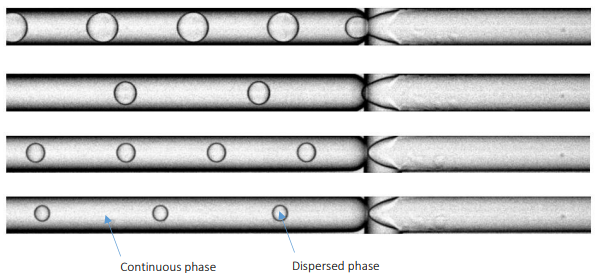shopping_basket
Which flowrates should I use?
Finding the right flow rates
To create droplets in a droplet generator, the first step is to make sure the correct fluids are coming
from the correct channels. You might need to train your eyes to distinguish between air and the used
fluids. If the flow rate of one of the two fluids is too high, you might be pushing this fluid into the
channel that was supposed to be the inlet of the other fluid. Also keep in mind that it might take some
time for the experiment to stabilize. For example if the initial fluid needs to travel through the tubing
first.
When you have created a flow of the two liquids which seems to be stable, the flowrates must be
further tweaked to find a regime in which droplets are created. Below, you can see the different
regimes as a function of total flow rate. Most droplet generators are designed to work in the dripping
regime. If you see a continuous stream of liquids, or a jet, you need to lower the total flow rate.
Changing droplet size
Below you see one droplet generator, during one run, creating different droplet sizes. Here the ratio
of the flow rates and the total flow rate have been changed to create different droplet sizes and
different droplet production frequencies. The higher the dispersed flow rate compared to the
continuous flow rate, the larger the droplets are. The total flow rate also influences the sizes of
droplets that can be created.




